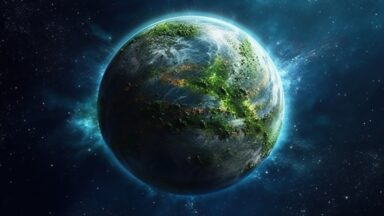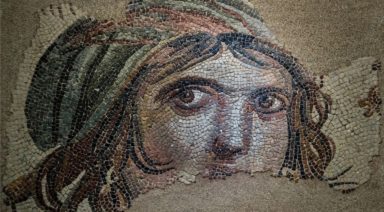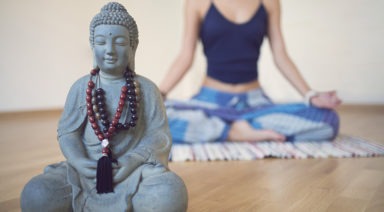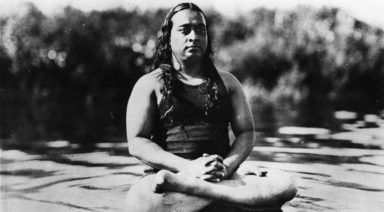The Heroine’s Journey

Stories have been told throughout time and across cultures of the hero’s journey, a series of events that a hero faces in order to fulfill his destiny. Most of these stories are cyclical, the hero ending up back where he started, only smarter, stronger, and with something gained from his struggles that will allow him to be the hero he was destined to be.
What is the Heroine’s Journey?
While the hero’s journey is more often talked about and better known, another journey exists, one that is, at this moment, crucial to be reminded of. That story is the one of the heroine’s journey, the feminine hero who learns in a completely different manner than our beloved hero. It’s important to remember that these stories of heroines and goddesses were once plentiful in the world. During the ages of goddess worship, these stories were not only shared, but lived by women around the world. Unfortunately, as the patriarchal society that we know today, filled with modern inventions and technology, began to take hold, these women and their stories were pushed to the sidelines, told that they were weak and fragile.
Over generations, women began to believe the stories men told them, and they gave up the life they once knew, trading it in for one of domesticity and servitude.
Guided by Intuition
In the heroine’s journey, woman warriors are uniquely guided by intuition, a knowingness that comes from within. This intuition is sourced and nurtured by nature and the creative connection that the feminine has with it. While men on the hero’s journey are guided by tangible things, like people, the female hero seeks guidance from the earth, hearing the voices of the plants and animals that no one else can hear, seeing signs in the sun, the moon, and the stars.
A Desire to Heal
Today, stories told about the heroine’s journey are about a woman’s desire to heal the wounds caused by living in a patriarchal society. Also coined “the mother wound” by Dr. Oscar Serrallach, women’s journeys are fueled by a need to recover what has been lost, a means to cope with the psychological struggle, the inner turmoil that drives her to reclaim the power and spirit of the sacred feminine. Dr. Serrallach writes that the four fundamental aspects of the feminine are “to nurture, to protect, to empower, and to initiate.” Roles that are either diminished, ignored, or refused of many women in today’s world.
When the patriarchal society gained footing, and women were removed from their place of power, an unforeseen side effect began, one that is beginning to be impossible to ignore today.
Connected to Nature
Women, who carry an innate connection with nature and a desire to nurture and protect, were made to forget their purpose on the planet, their voice drowned out by the droning of machines. Indoors, women turned to their family, doing what they could to nurture, protect, and empower their sons and daughters. But, away from nature, their source of power, women were weakened, removed from the planet’s cycles, no longer hearing the voice of the infinite mother who speaks softly through the wind, the leaves, and the whistles of birds.
A Call to Protect Mother Earth
Over centuries of being forgotten, her female protectors locked behind walls, our mother earth is suffering – burned, scarred, abused, and ignored. She is crying out louder now, begging for someone to come and to remember her, to protect her against the atrocities that are taking place on her soil and in her sky. Only she knows exactly who will come to her rescue: women.
Women, when they start to remember who they are, can speak to her. They can fight for her and do what they do best: nurture, protect, and empower.
Relearning From the Divine Feminine
The beautiful thing is that women today don’t need to start from scratch; there is a relearning that needs to take place, one that can be facilitated by the groups of women who never lost touch with the divine feminine. In the documentary Arise women can be inspired by others who are leading efforts to protect and restore our natural environment. On every continent, there are women who have not forgotten their roots, women who are actively creating and being involved with projects that are solving some of the world’s largest natural problems.
In another film, Juliette of the Herbs, women can see the beauty of a life lived through herbalism, holistic medicine, and a deep love and affection for animals. Finally, we can see the potential of our actions in the beautiful documentary, created by the futurist Barbara Marx Hubbard, Visions of a Universal Humanity, highlighting the optimism that is needed to fuel our ambitions of saving our planet.
There is no doubt that women play a role, an important role, in the future of our planet. Designed to tune in to the subtleties of nature, to draw power and strength, to share in the creative force, to be led by intuition, women, as the Dalai Lama famously projected, will save the world.
Three Things You Can Do Now
- Get inspired by women (like those in the films above) who are already blazing a trail for you. Listen to what they have to say, notice how they live, and ask yourself what resonates and calls to you.
- Take action now, even if you just start by going outside and listening. Find yourself in nature, close your eyes, and take in long, deep breaths. Take off your shoes and feel the earth beneath you. Pay attention to the beautiful intricacies of flowers, leaves, and individual blades of grass. Recognize the spirit in animals. Begin to remember who you are and the power of carrying the divine feminine.
- Get involved at some level with protecting and reconnecting to the planet. It might be as simple as starting a garden in your backyard or joining a community garden to help bring beauty and nourishment to your neighborhood. Consider donating to efforts you have researched and feel connected to. Think about changing your diet, so that you are eating more whole, plant-based food. Whatever you do, do something that causes you to change the patterns you have fallen into. Do something that draws you outside of your comfort zone and back into the wild – where you belong.
What Does Gaia Mean?

Although the name Gaia has various meanings and interpretations, it is most commonly associated with the Greek goddess who personified Earth in its primordial form. Quite simply, the definition of Gaia is life. She is all, the very personification of the earth. She is the mother goddess, inhabiting the planet, and offering life and nourishment to all her children. In ancient civilizations, she was revered as the mother, nurturer, and giver of life. She goes by many names, including Gaea, Ge, Mother Earth, Terra Mater to the Romans, Magna Mater, and more recently, Mother Nature. Each of these names is a testament to her enduring presence as the life-giver, the ultimate nurturer, and the architect of existence.
Gaia, often pronounced “GUY-uh,” holds the essence of existence within its syllables. This name, steeped in the rich tapestry of ancient Greek mythology, serves as a bridge to the Earth itself, embodying the very spirit of the planet. The etymology of Gaia, or Γαῖα in the original Greek, translates to ‘earth’ or ‘land,’ a fitting homage to her role as the primal Earth Mother. The term has since transcended its mythological roots, evolving into a symbol for the interconnectedness of all life on Earth, particularly within environmental and ecological contexts.
As we delve into the myriad ways she manifests across cultures and epochs, we embark on a journey to deepen our connection with the world around us, exploring the profound legacy of Gaia’s nurturing embrace.
Gaia: The Goddess of Ancient Greek Mythology
Within the pantheon of ancient deities, Gaia’s presence was unparalleled, embodying the very essence of primordial creation and maternal might. Her name, evoking the boundless strength and nurturing spirit of the Earth, was revered across the ancient world. To the Greeks, Gaia was the ultimate goddess of raw, maternal power. In the beginning, there was chaos, nebulous ethers waiting to take form. This primordial landscape awaited direction; it was then that the spirit of Gaia arrived to give structure to the formless and the Earth was conceived.
The Mother of Life and the Divine Heavens
In Greek mythology, Gaia stands as the quintessential embodiment of the Earth itself, revered as the primal Mother Earth goddess. From her fertile womb sprung the very fabric of the cosmos: she gave birth to Uranus, the sky, who would become both her husband and her equal; Pontus, the ancient, unfathomable sea; and the towering Titans, precursors to the Olympians. Among her offspring were the Titans – Cronus and Oceanus, the Cyclops with their single, piercing gaze, and the hundred-handed giants, each embodying forces of nature and the universe’s nascent power.
Her influence extended beyond mere creation. Gaia’s union with Uranus spawned the first pantheon of Greek deities, setting the stage for the saga of the gods and goddesses that would dominate Greek myth. Yet, it was through her guidance that Zeus, her grandson, ascended to become the chief among the Olympian gods. Her wisdom and might were echoed in the tales of her descendants, including Athena, the Greek goddess of wisdom, born of Zeus’s head, further cementing her legacy within the mythological hierarchy. Gaia’s story, interwoven with the elements of creation, celestial phenomena, and divine lineage, marks her as a central figure in the tapestry of Greek mythology and the subsequent origin of Olympus, embodying the Earth’s life-giving force and maternal strength.
The Paleolithic Venus: Rediscovering the Earth Mother
The Paleolithic Venus figurines, scattered across Europe, are emblematic of ancient societies’ reverence for the feminine Earth Mother—a veneration somewhat obscured by the passage of time. These figurines, often robust and gravid, symbolize fertility, motherhood, and the generative powers of nature itself. They serve as silent yet eloquent testimonials to a time when the worship of the Earth’s nurturing essence was widespread, deeply ingrained in the fabric of everyday life.
Modern excavations and scholarly endeavors have begun to peel back the layers of history, revealing a complex tapestry of belief systems that placed the Earth Mother at their core. Through the meticulous study of these artifacts, historians, archaeologists, and artists are gradually reconstructing the narratives of these ancient peoples. This resurgence of interest not only honors the goddess’s legacy but also rekindles a connection to our collective past, where the Earth was revered as the ultimate source of all life and sustenance.
A Return to Divine Feminine: Gaia’s Resurgence in Modern Consciousness
As the prevalence of gods and goddesses in the 19th and 20th centuries faded away, so did history books’ tales of female pharaohs, women scientists, and Amazon warriors. History is kept by the victors—and the victors are most often men. This left a void in the collective consciousness and Gaia was relegated to mythology alone. With the convergence of feminism in the 1970s, all that changed when a groundbreaking pro-female establishment was founded, providing a new understanding of how our planet operates.
In the wake of the 20th century, Gaia’s image was revitalized by the fusion of feminism and environmentalism. This revival spotlighted the divine feminine, with Gaia symbolizing strength, nurturing, and interconnectivity. Feminism’s quest to amplify silenced voices paralleled environmentalism’s rise, especially after “Silent Spring,” casting Gaia as an emblem of ecological awareness and unity. This modern embrace of Gaia has galvanized a collective push towards environmental respect and sustainability, intertwining spiritual reverence with activism for a balanced, thriving planet.
The Gaia Hypothesis: Earth as a Self-Regulating Living System
In 1970, chemist James Lovelock and his research partner, biologist Lynn Margulis introduced the Gaia Hypothesis, positing Earth as a self-regulating, living being capable of maintaining the conditions necessary for life. Initially met with skepticism, the hypothesis challenged the prevailing view of Earth as a passive backdrop to life, proposing instead that life actively participates in shaping the planet’s environment. This idea of Earth as a cohesive system, where biological processes interact with physical and chemical ones to maintain life-sustaining conditions, was revolutionary. The scientific community’s initial resistance stemmed from the hypothesis’s implication that Earth’s biosphere functions almost like a single organism, a concept that seemed to blur the lines between life and non-life.
Gaia Theory: Understanding Earth’s Intelligent Systems
Building on their hypothesis, Lovelock and Margulis’s work revealed how Earth’s myriad components—its atmosphere, biosphere, geology, and oceans—integrate to form a complex, self-regulating system. This system, guided by the interactions between living organisms and their environment, adjusts and responds to changes in a way that sustains life. For example, the regulation of Earth’s atmosphere by photosynthetic organisms, which convert carbon dioxide into oxygen, demonstrates this symbiotic relationship. Such mechanisms underscore the planet’s capacity for self-regulation and balance, evidencing a level of systemic intelligence previously underestimated.
Gaia theory has since evolved from a controversial hypothesis to a foundational concept in Earth system science, inspiring further research into how Earth’s life-supporting systems operate. It has underscored the importance of viewing the planet as an integrated whole, where each component plays a critical role in maintaining the conditions for life. This holistic perspective has significant implications for environmental conservation, highlighting the delicate interdependencies that sustain the Earth and the impact of human activities on its ability to regulate itself.
The Spiritual Meaning of Gaia in Practice
Far beyond the mythological Gaia, the name has come to represent an all-loving, nurturing, and intelligent cosmic force that oversees life on Earth. The revival of goddess traditions has been instrumental in reintroducing the ancient wisdom of the Great Mother, affirming her role as a beacon of love and sustenance. Yet, engaging with Gaia’s legacy demands more than occasional environmental activism or annual Earth Day observances. It calls for a daily commitment to living in harmony with our planet, treating each interaction as a sacred opportunity to honor and preserve the intricate web of life Gaia sustains.
To foster a truly connected relationship with Gaia means to actively participate in the stewardship of Earth, recognizing and respecting the bounty she provides. This involves making conscious choices that reflect our understanding of the interconnectedness of all life forms and the impact of our actions on the planet’s health. By adopting sustainable practices, advocating for environmental protection, and cultivating a sense of reverence for the natural world, we can contribute to a future where both humanity and the Earth flourish. In doing so, we not only pay homage to Gaia’s enduring spirit but also embrace our role as caretakers of the beautiful, dynamic planet she embodies.





































